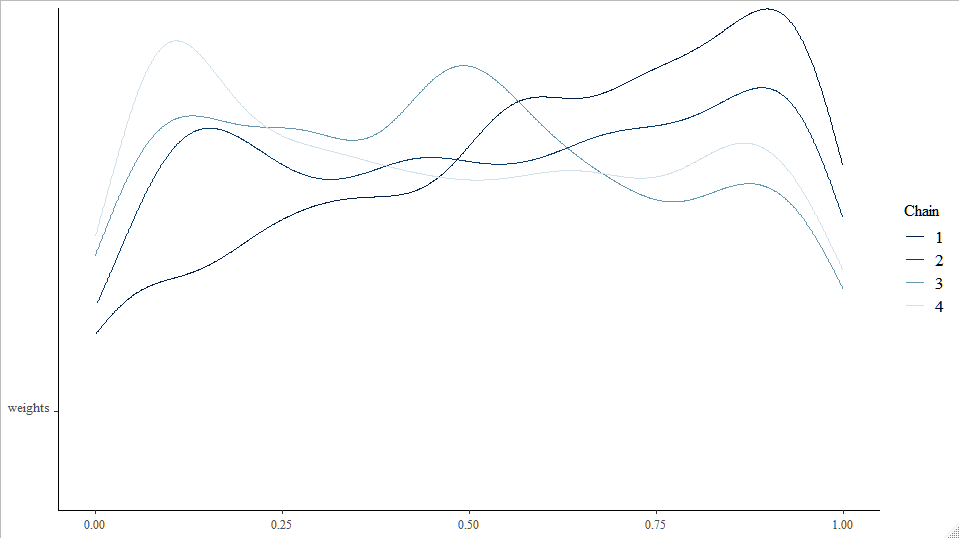Hi, I am trying to replicate the Poisson random variable example using mixture function in which we deal with two multinomial random variables.
x <- rbind(t(rmultinom(100, 1, c(0.1, 0.2, 0.7))),
t(rmultinom(400, 1, c(0.2, 0.3, 0.5))))
head(x)
#> [,1] [,2] [,3]
#> [1,] 0 0 1
#> [2,] 0 0 1
#> [3,] 0 1 0
#> [4,] 0 0 1
#> [5,] 0 0 1
#> [6,] 0 0 1
weights <- uniform(0, 1, dim = 2)
rates <- dirichlet(t(rep(1, 3)), n_realisations = 2)
distribution(x) <- mixture(multinomial(1, rates[1,]),
multinomial(1, rates[2,]),
weights = weights)
#> Error: left and right hand sides have different dimensions. The distribution must have dimension of either 500 x 3 or 1 x 1, but instead has dimension 1 x 3
I basically follow the same steps in the example and couldn’t figure out where I did it wrong. Can you help me with debugging this? Thank you.
BTW, I am a JAGS user for four years and just found this tool. It looks super cool and I regret not trying this earlier.

